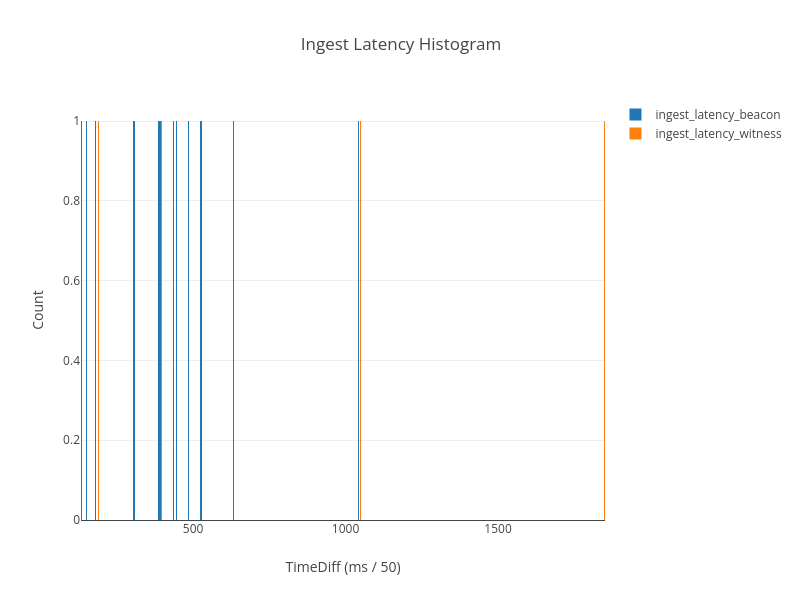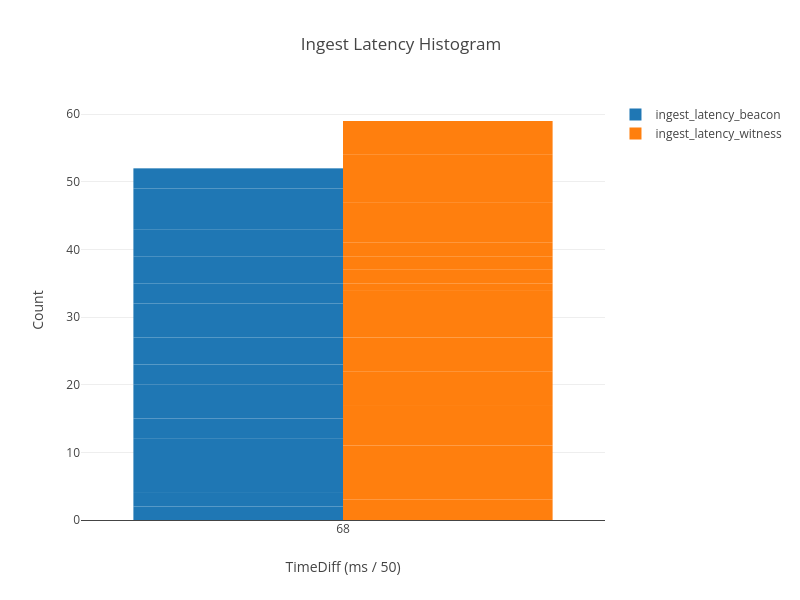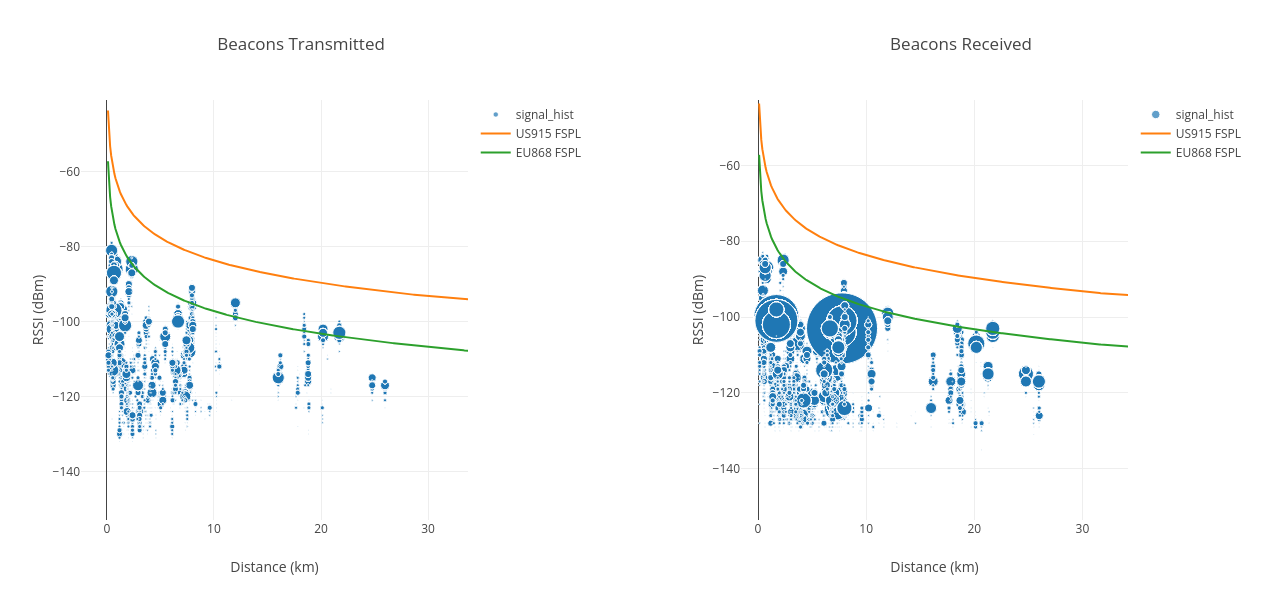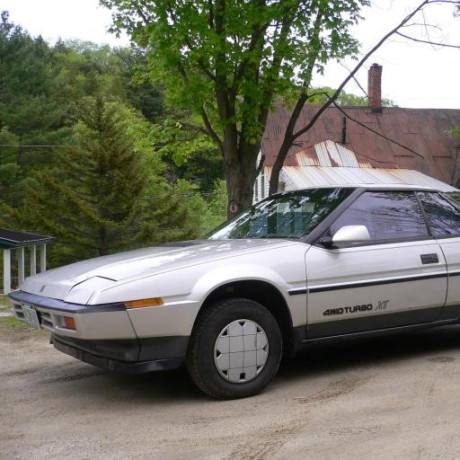New IoT Denylist Classifiers
As discussed on recent IoT working group calls, Nova Labs has introduced two new classifiers into the denylist.
Ingest Latency Edge Classifier
The data gathered from the oracles contains information related to the observed ingest latency when a Hotspot witnesses another Hotspot. In the PoC pipeline we create histograms of these observed ingest latencies.
The keys in the histogram correspond to the observed time-diff when the packet was received by the destination Hotspot and the values correspond to the number of occurrences of the observed time-diff.
Below are two samples of such histograms:

This is an example of a "bad" latency histogram. No peaks, and very little below 4000/50 (80 on the x axis here).

This is an example of a "good" latency histogram. A strong and defined peak at 3400ms, which is the expected time for EU868.
To quantify and mathematically prove such outliers, we have the following algorithm:
Preparation
Make coarser buckets of keys and accumulate values such that the variance of observed time-diff has lower impact on the algorithm to find the outliers.
For example, a time-diff of 3000, 3010, 3020 can be bucketed as 3000. Notice that these times are 1/100th of a millisecond thus it's reasonable to make this assumption and have some built-in tolerance.
Rules
- If the number of observed samples is greater than 1 and the standard deviation of values (counts) is greater than or equal to 0.0 and the maximum observed time diff is less than or equal to 4000, we consider the ingest latency to be within bounds.
- If the number of samples is exactly equal to 1 and the maximum observed time diff is less than or equal to 4000, we consider the ingest latency to be within bounds.
- Anything else that doesn't belong to the above two rules is considered a potential re-broadcaster.
We use the above rules to quantify whether an edge should be marked as illegitimate or not.
Antenna Splitter Hotspot Classifier
This classifier attempts to identify Hotspots that are sharing an antenna.
Antenna splitting is never considered ok, so there's an absolute maximum RSSI we tolerate (currently set to 0).
This classifier requires these links to have these properties reciprocally, as in the reverse link also has to exceed these thresholds.
The classifier records a list of Hotspots that the Hotspot is splitting with. These are included in the report cards.

A Hotspot with positive RSSI values with multiple peers that are asserted more than a kilometer apart. This is very likely to be antenna splitting.

A Hotspot (in US915) with a much more typical RSSI/Distance plot.
We've currently been quite conservative with this classifier. In the future we intend to extend it to also cover Hotspots that are in the same room/building but are asserted significant distances apart.
